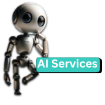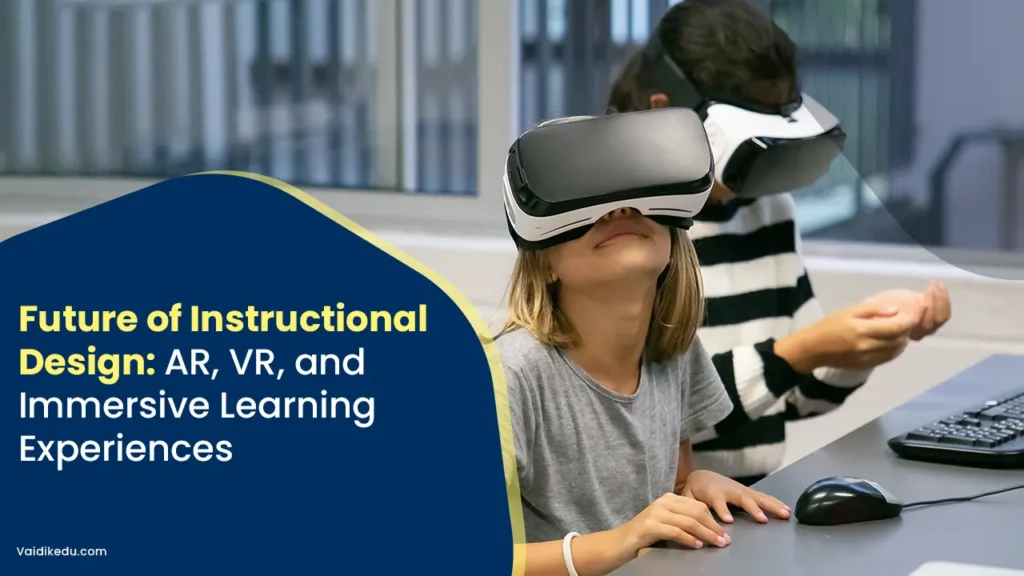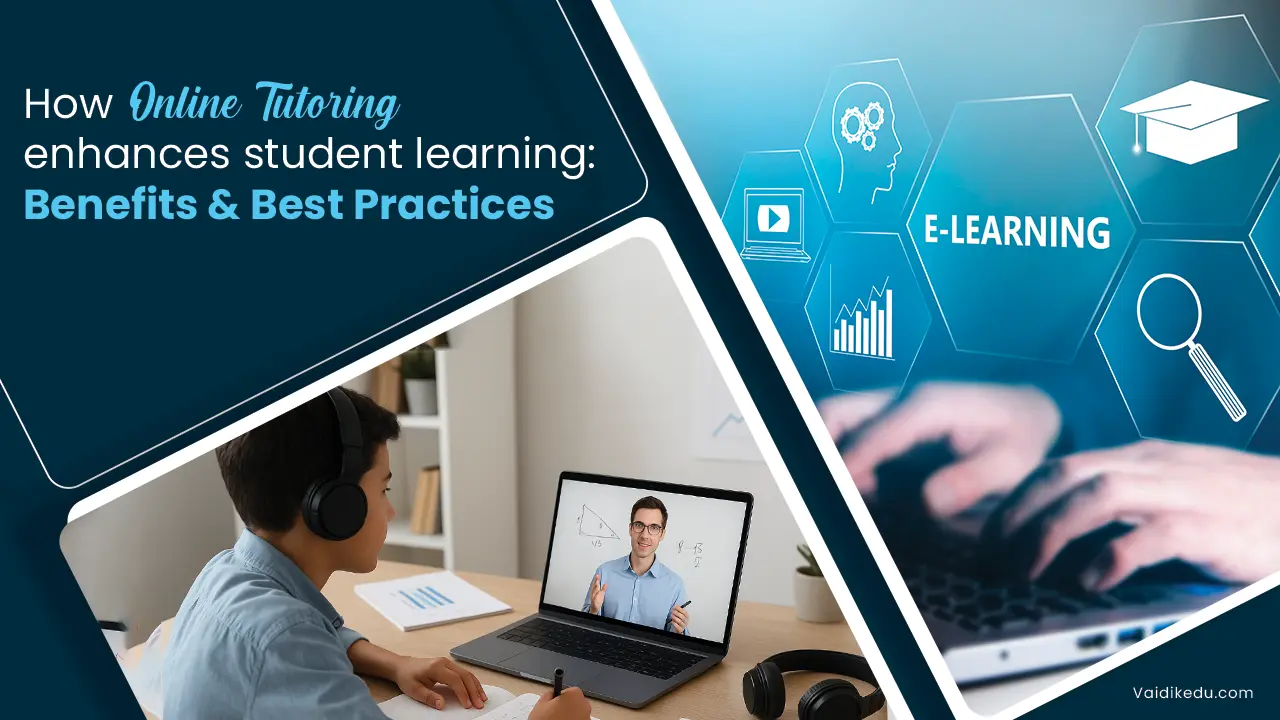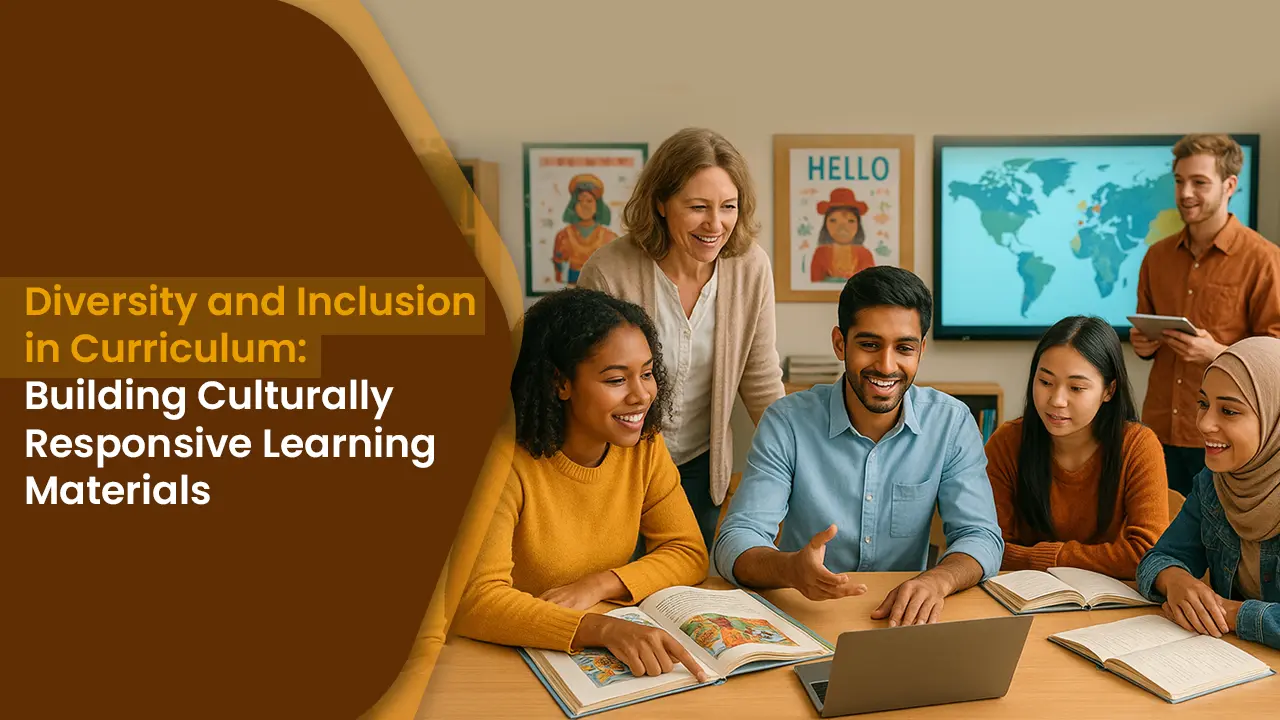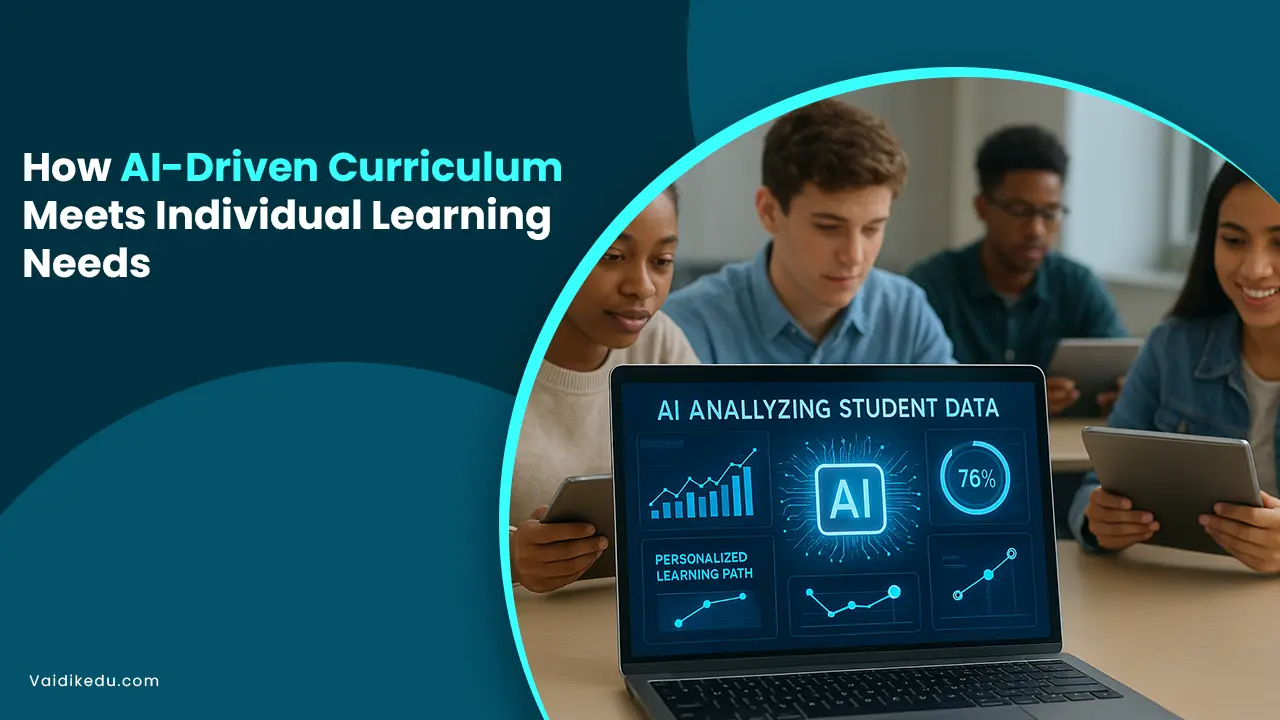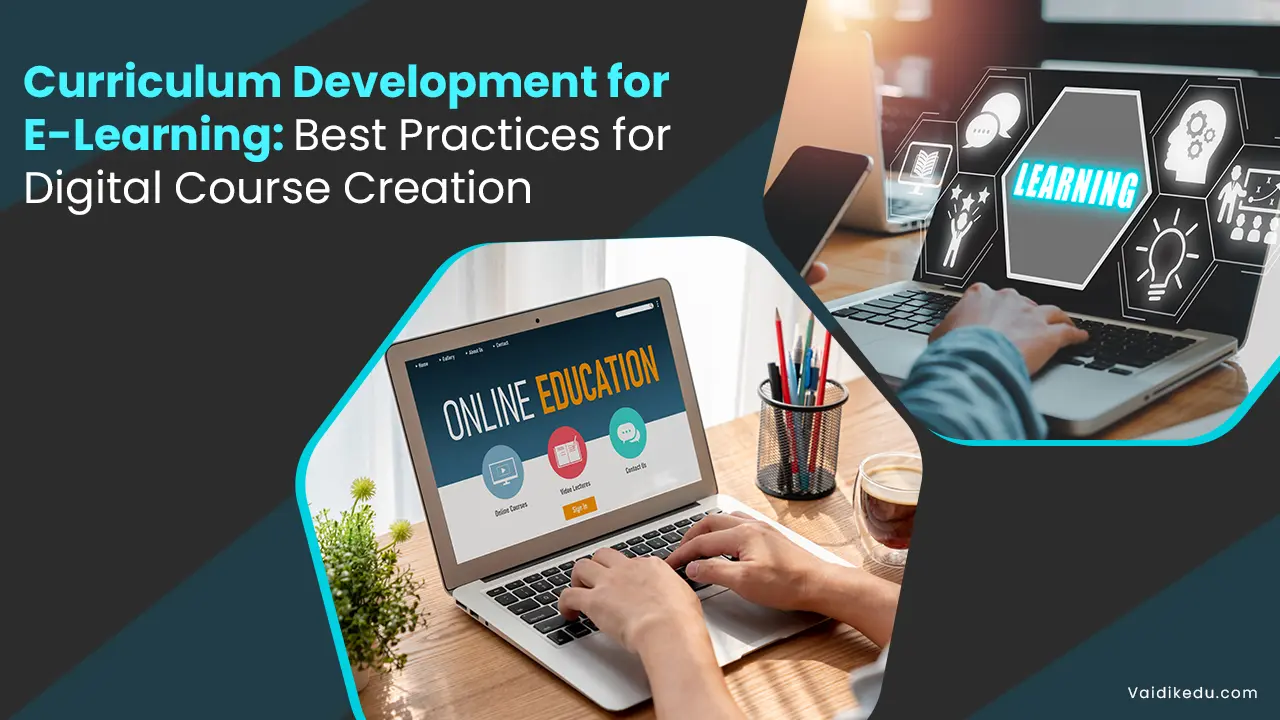Instructional design has dramatically changed in the last few years due to the progress made in technology. The modern innovations are Augmented Reality and Virtual Reality, which will alter how we come to learn. Its application will make education lively, engaging, and efficient since it brings on modern innovation-like continuous learning.
In the virtual world, AR and VR will allow learners to acquire new skills and knowledge in a real-world dynamic, lively environment. This blog talks about the future of instructional design discussing AR, VR, and immersive learning experiences in a new era of education. Evolution of Instructional Design and Technology
Instructional design has always been ready to evolve along with the tools that have existed within a given period; from chalkboards and textbooks to digital media, instructional design has continued to grow.
Digital learning took off when incorporating technology from LMS and e-learning. With AR, VR, and immersive technologies added to instructional design, this can be said to be going to a new level of innovation.
These tools are not only more accessible but support various types of learning; that is, ways in which the learner would relate to the content in unimaginable ways.
What Are AR, VR, And Immersive Learning
Augmented Reality (AR): AR puts digital information into a real-world context by layering images, sounds, or text onto something real. For example, one can uncover higher levels of information about an actual physical ordinary object using a smartphone or AR glasses. Abstract notions like medical anatomy or engineering blueprints take more tangible forms during instruction.
Virtual Reality (VR): It allows the creation of a completely immersed digital environment wherein learners can engage with a simulated world. This technology is utilized for simulating high-risk events, such as training pilots, performing surgical interventions, or drilling disaster management.
Immersive Learning Environments: immersive learning environments allow students to be highly involved in a simulated environment; such environments can easily integrate features of both AR and VR. Immersive learning was focused on hands-on, experience-based education similar to real-world activities.
Advantages of AR, VR, and Immersive Learning in Instructional Design
- Increased Engagement And Motivation
Traditional learning methods cannot keep learners engaged for long. AR and VR are highly interactive and visually rich technologies that keep learners engaged in ways unheard of through traditional methods. Gamified elements in these technologies also motivate learners to participate actively in their education.
- Realistic Simulations For Practiced Learning:
It’s probably one of the most important benefits of AR and VR, which can deliver realistic simulations. For example, medical students will be able to practice surgeries without risk in a virtual environment; space mission training for astronauts can be accomplished through VR, thus filling a gap between knowledge and practical applications.
- Personalized Learning Experiences
Personalized AR and VR allow for learning in a manner that is suitable for the needs of each individual by offering tailored content and pace. For example, language learners can use AR applications to practice vocabulary in real-life scenarios while using VR platforms to simulate conversations for practice.
- Accessibility And Inclusivity
Immersive technologies make education more accessible to the masses. It allows students who are in remote locations to participate in virtual field trips or access specialized training programs, thus removing geographical barriers. Moreover, AR and VR tools can be modified for learners with disabilities, such as audio descriptions for visually impaired users.
- Cost-Effective Training Solutions
With VR simulations, expensive equipment or real-world setups for healthcare, aviation, and manufacturing could be reduced. Such cost-effective alternatives help organizations train workers without any trade-offs in terms of quality.
AR, VR, And Immersive Learning Applications Across Industries in Education
In the classroom, AR can bring textbooks to life, and 3D models of topics such as science, history, and geography become interactive. VR field trips can transport students to places like ancient Rome or the bottom of the ocean without leaving their school. Such experiences are already being paved through immersive learning platforms like Google Expeditions.
- Corporate Training
Companies are increasingly deploying VR for employee training, especially in the fields that have safety protocols. For instance, construction workers can be trained for various hazards in an altogether different VR environment, while retail employees can learn to talk with customers through AR tools.
- Healthcare
AR and VR transform medical education with the delivery of virtual environments that enable the student to perform procedures. During surgery, AR will help the surgeons overlay critical data into their line of vision.
- Military And Defense
The military trains combat situations and plans strategy as well as trains equipment handling in the VR simulations. Soldiers have access to real-time data using AR devices that help increase their situational awareness while on the ground.
- Retail And E-commerce
Clients can “try out” products, for instance, seeing whether furniture fits in their houses or how clothing would look on them. The use of immersive technologies is being used by retailers to enhance the experience of customers and help them make quick purchasing decisions.
- Entertainment And Gaming
The entertainment sector is using immersive technologies. As demonstrated, Pokémon GO is an example of an AR technology product, and immersive VR gaming platforms can be applied in the use of the technology in interactive storytelling.
Challenges in Implementation of AR, VR, and Immersive Learning
- High Installation Costs
Implementing AR and VR solutions involves a lot of investment in hardware, software, and content creation. This makes it hard for most educational institutions and organizations to implement the solutions.
- Technical Limitations
The quality of immersive experiences depends on the capabilities of the hardware, such as VR headsets or AR glasses. Seamless performance across different devices remains one of the challenges to date.
- Content Development
Content creation requires specialized tools and skills to ensure the quality and depth of an immersive experience. In addition, the lack of standard formats may pose a challenge to mass adoption. Both educators and learners may face a learning curve when adopting AR and VR tools. Proper training and support are essential for successful implementation.
- Ethical And Privacy Concerns
Immersive technologies often require collecting and processing large amounts of user data, raising concerns about privacy and security. Additionally, prolonged use of VR headsets can lead to health issues, such as eye strain or motion sickness.
The Future of Instructional Design: The Integration of AR, VR, And Immersive Learning
The immediate future will see further integration into instructional design for AR and VR technologies, which will happen much more fluidly across most educational fields.
Even newer trends such as the metaverse and AI-driven personalization hold promise for yet more revolutionary learning experiences. Instructional design of the future is expected to involve hybrid models where both physical and digital learning environments exist.
Educational institutions and organizations must invest in R&D, overcoming the challenges that exist today, to fully exploit the potential of these technologies. The interaction of technologists, educators, and policymakers will be critical in shaping the future of this domain.
Conclusion
Integrating AR, VR, and immersive learning into the instructional design revolutionizes education by making it more engaging, interactive, and effective. They bridge the gap between theoretical knowledge and the actual application, providing learners with realistic simulations and interactive learning experiences.
Although challenges such as high costs and technical limitations continue to hinder their applications, their massive potential to improve learning in areas of industry is incontestable.
These innovations promise to make the educational landscape more inclusive and dynamic as they evolve. By this, educators and organizations can unlock new possibilities and shape the future of learning for a global audience.
The future of instructional design rests in using AR, VR, and immersive learning experiences as the basis for engaging, interactive, and personalized education.
These technologies enhance knowledge retention and skill acquisition as well as make learning accessible to a global audience. The good outweighs the less good potential benefits, so AR and VR will be indispensable tools for the future of education and training. Embracing these innovations can pave the way to a more dynamic and inclusive learning landscape.
Frequently Asked Questions
AR overlays digital information in the real world, while VR creates fully immersive digital environments. Each is applied in instructional design to boost the level of engagement and even train literally with the hands.
Immersive learning helps practice real-world scenarios in a controlled and risk-free environment that brings superior improvement to practical skills and knowledge retention.
The uses of AR and VR include education, health, corporate training, military, retail, and entertainment, to name a few.
High costs, technical limitations, issues in developing content, users’ learning curve, and ethical concerns regarding the data privacy issue.
This means that more individualized, hybrid learning models will flourish in combination with AI; the wider availability of advanced applications across more sectors will enhance educational inclusivity and efficiency.

